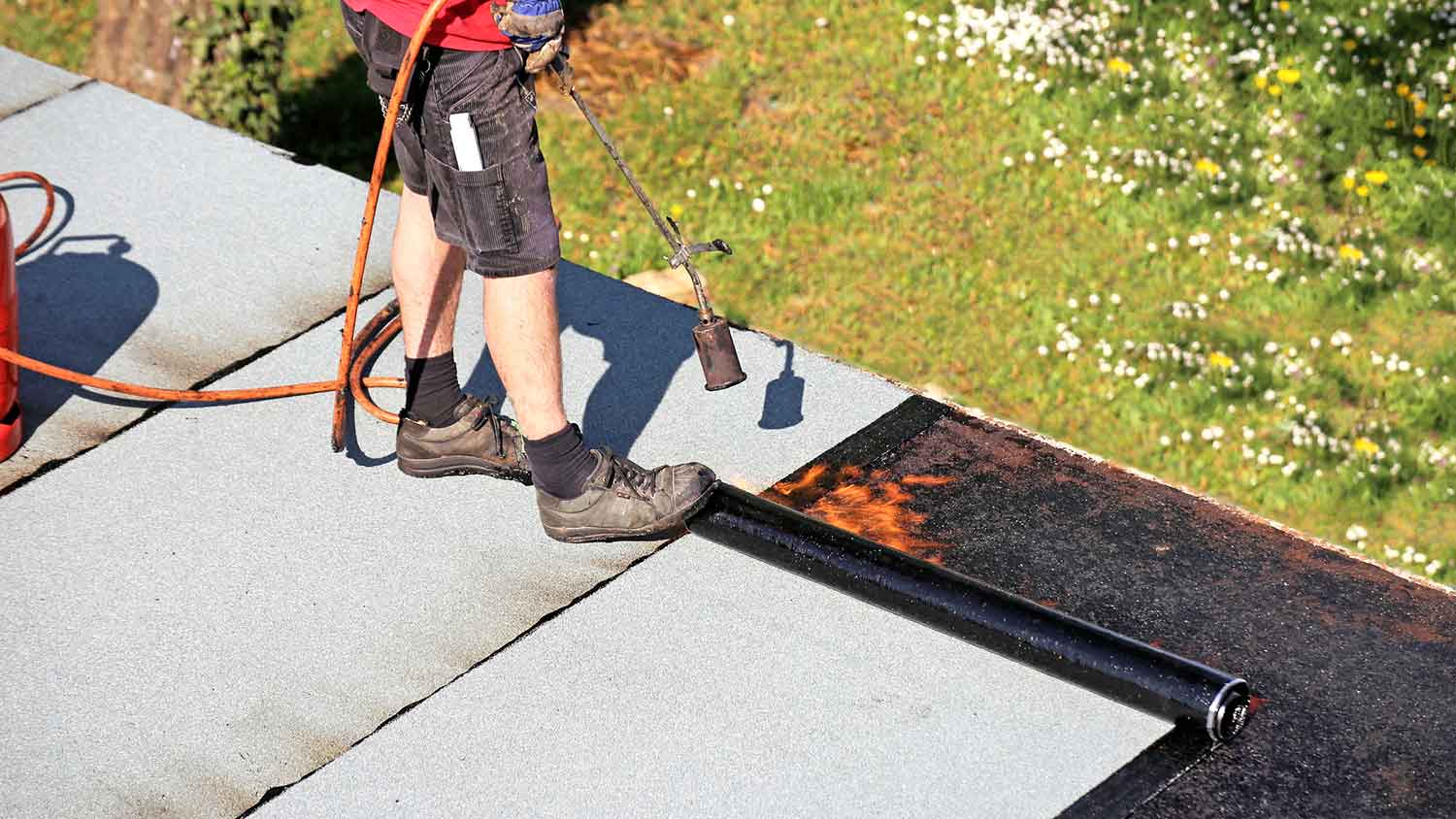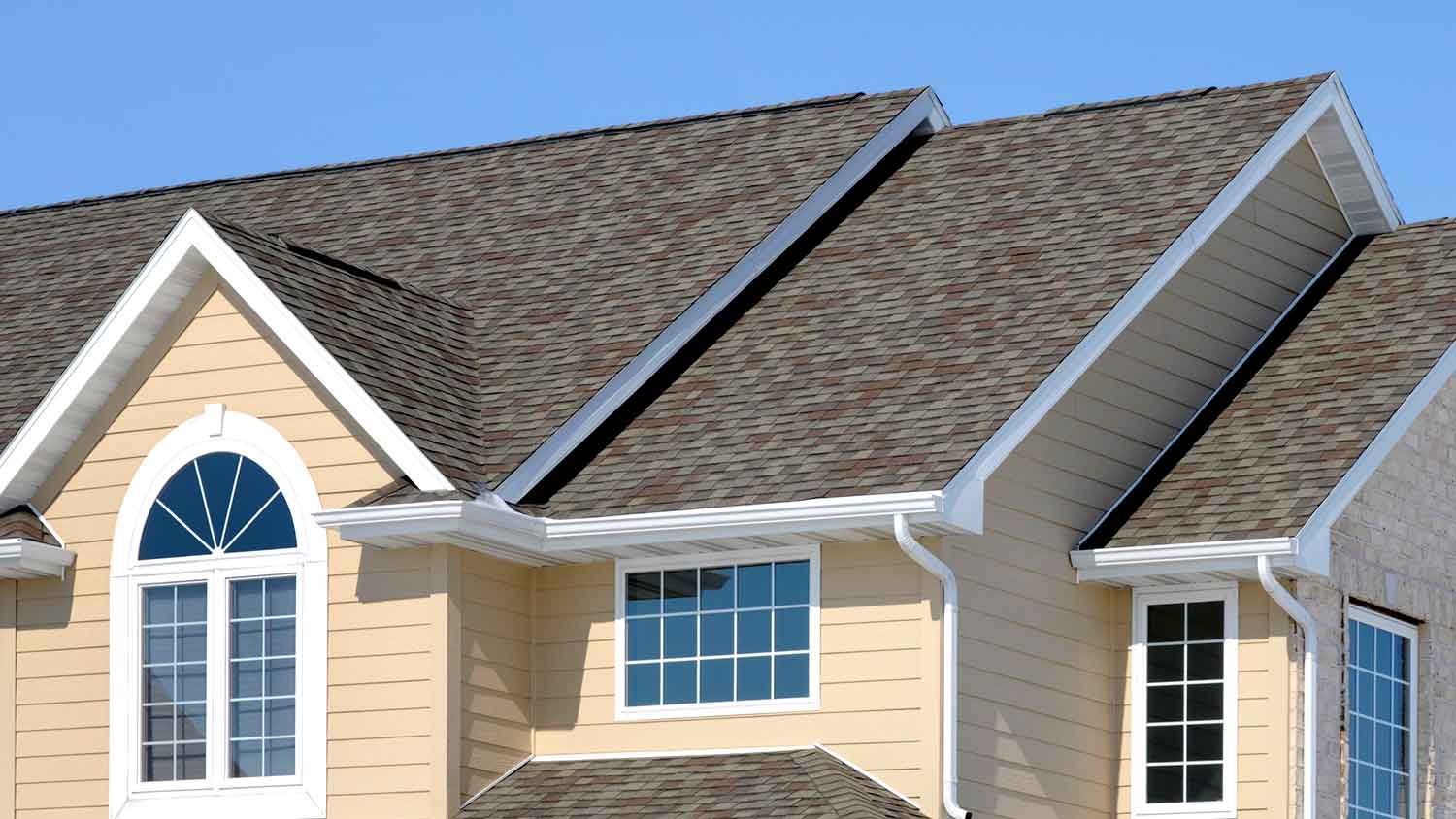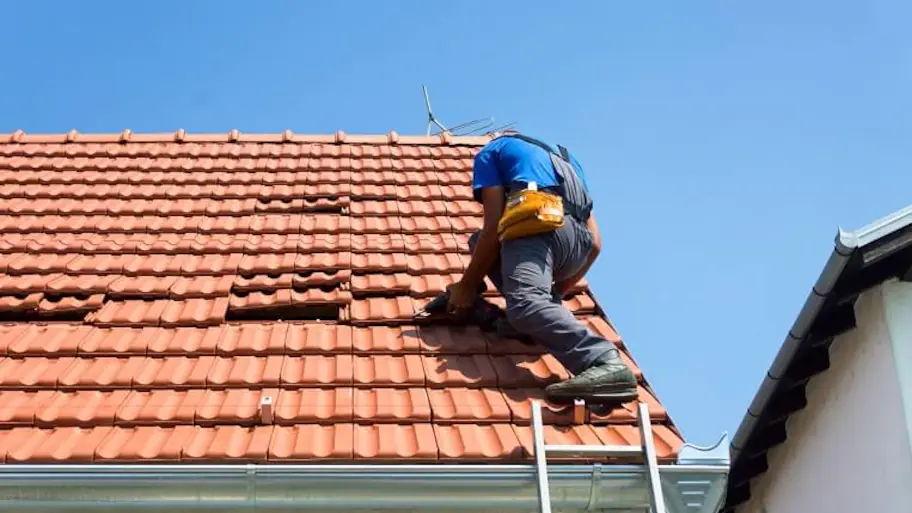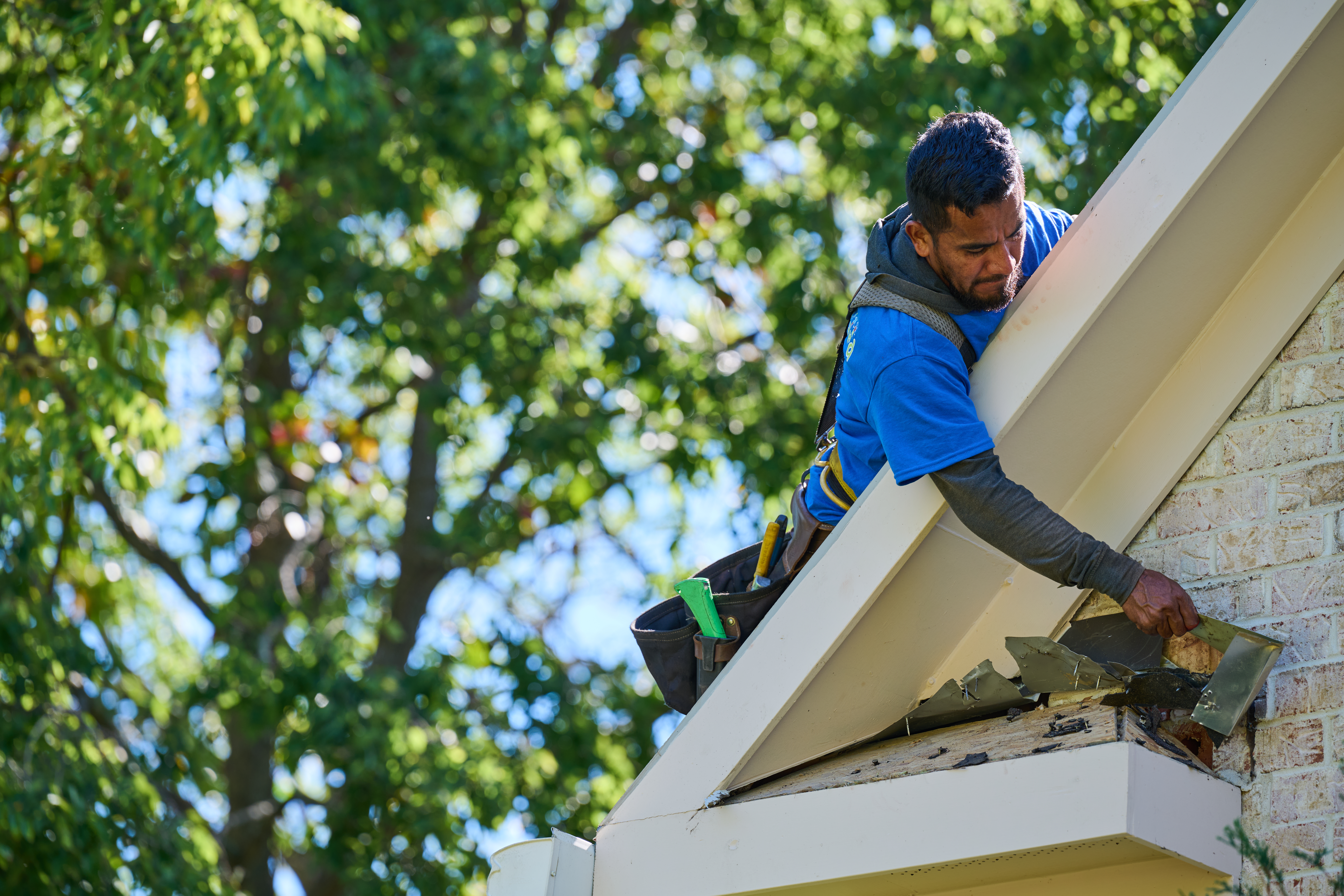
Knowing your home's roof underlayment replacement cost can help estimate the cost of roof replacement. Learn about the factors that affect prices.
Make sure your roofing material is pitch perfect


Your roof’s pitch will help you choose between a flat roof and shingles.
Roofs with a very low or flat pitch require flat roofing materials like modified bitumen, TPO, or tar and gravel.
Roofs with moderate or steep pitches can be shingled to help with drainage and protection against the elements.
When you’re building a new home, the near-endless options for roofing can be overwhelming. Flat roofing and shingles are both common choices, but they can’t be used interchangeably. Learn more about flat roofs and shingles, what type of roof each is good for, and how to make the best choice for your home.
Flat roofing and shingles differ not only in the material but also in the type of roof each is used on. Flat roofing, which includes materials like modified bitumen, spray foam roofing, thermoplastic polyolefin (TPO), and PVC roofing, is used on roofs with a very low or flat pitch or slope. Shingles are used on moderately or steeply pitched roofs with a minimum slope of 2:12—two inches of vertical rise for every 12 inches of horizontal length.

A flat roof is just what it sounds like—a roof with no slope. These roofs can be made from PVC, foam, tar and gravel, and other materials that offer varying levels of protection, waterproofing, durability, and weight. Flat roofs are most common on commercial buildings but can also be found on homes across the country. A flat roof requires careful design and installation to ensure proper drainage and adequate protection from the elements.
| Pros | Cons |
|---|---|
| Budget-friendly | Requires frequent maintenance |
| Adds usable rooftop space | Shorter lifespan |
| Less complex roof deck | Prone to ponding and leaks |
Best for:
Homeowners who want a rooftop patio or garden
Homes in areas without heavy snow or ice
Flat roofs are popular in part because they’re less expensive than pitched roofs. Not only are the materials more affordable, but the support system a flat roof is built on is often less complex and requires fewer materials than a pitched roof. As a bonus, flat roofs allow homeowners to use their rooftop space, whether for HVAC units or a rooftop garden or patio.
Flat roofs cost less to install, but you’ll need to replace them more frequently than pitched roof materials like shingles. They require frequent maintenance to keep them free of damage, and since drainage is more complex, these roofs are susceptible to water damage from ponding and leaks.

A shingle roof consists of individual or rows of shingles, most often made from asphalt, attached to a pitched roof structure, creating a traditional sloped roof shape. Shingle roofs come in various styles and are the most common type of residential roof in the U.S. The slope of shingle roofs allows for easy drainage and snow and ice removal.
| Pros | Cons |
|---|---|
| Easy to install | Prone to wind damage |
| Aesthetic appeal | Low insulation value |
| Easy to repair | Sensitive to temperature fluctuation |
Best for:
Homes in areas with moderate climate conditions
Homes with a traditional aesthetic
Because shingle roofs are so common, you won’t have trouble finding qualified roofers to install one. Installation is straightforward and quick, and repairs are often as simple as replacing damaged shingles. Shingle roofs are also attractive, giving a classic aesthetic that can be customized with different shingle styles and colors.
Shingle roofs are particularly susceptible to damage from various weather and environmental conditions. High winds can lift shingles or even blow them off the roof entirely. They’re also prone to damage from fluctuating temperatures, which can cause cracks, shingle granule loss, shifting shingles, and leaks. Shingles don’t offer much in the way of insulation, either—the underlying roofing layers and attic insulation provide most of the roof’s insulating properties.
If you’re replacing an existing roof, your roof’s pitch will determine whether you need a flat roof or shingles. If you’re deciding on what type of roof you want for a new build, consider these factors so you can make the right choice.
Flat roofs aren’t known for their aesthetic properties—most styles are fairly utilitarian and don’t add much curb appeal. A shingle roof gives your home a classic silhouette and offers more customization options so you can get the look you have in mind.
Flat roofs are normally less expensive overall than shingle roofs, even though they may be pricier per square foot. That’s because flat roofs require less material for the underlying structure, and a flat roof uses less total roofing material since the slope of a shingle roof adds significant square footage. A shingle roof costs around $7,500 to $24,000, while a flat roof replacement costs an average of $3,000 to $11,500.
Shingle roofs are the most common type of residential roof, so you can easily find a roofer to quickly install one. Flat roof installation requires specialized equipment and experience depending on the type of roofing material, so you’ll need a local flat roofing pro to tackle the job.
Shingle roofs are easily repaired—simply replace the damaged shingles. When a flat roof needs to be repaired, the repair may involve a much larger area than where the damage occurred. Some types of flat roofing are applied as a single-layer membrane, so any repairs must be carefully performed so as not to compromise the surface. With either type of roof, hire a roofer who can assess and repair any damage as soon as you notice it.
Shingle roofs win out when it comes to lifespan, lasting anywhere from 15 to 50 years. Flat roofs last an average of 10 to 25 years, depending on the material. An annual inspection of your roof will indicate if your shingle roof is nearing the end of its lifespan or shows signs your flat roof needs to be replaced.
From average costs to expert advice, get all the answers you need to get your job done.

Knowing your home's roof underlayment replacement cost can help estimate the cost of roof replacement. Learn about the factors that affect prices.

The average cost of roof repair for U.S. homeowners averages between $386 and $1,875. Learn what factors can affect roof repair costs.

Asphalt shingle roofs are the most common roof type in the U.S. Learn about average shingle roof costs and the factors that can affect your total.

When you install a new roof, you want it to last as long as possible. Knowing what voids a roof warranty helps you avoid situations that nullify the warranty.

Wondering about the pros and cons of asphalt shingles? Read on to learn why you should (or should not) consider shingles for your new roof.

DIYing roof repairs can save you thousands over the life of your roof. Learn how to replace damaged roof shingles to get the job done correctly.